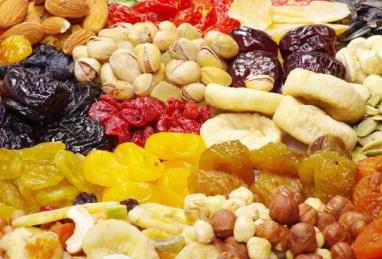Dry fruits, just like any other products, have their own storage rules, which help preserve all the vitamins, microelements and nutrients contained in them. Violation of these rules may result in the spoiling of the product or its quality. Correct storage of dry fruit, in its turn, may help avoid the appearance of insects or accumulation of the mold that can bring harm to human health, which especially concerns kids and retired people, who are supposed to allergic reactions or have respiratory tract problems. Listed below are the major rules of dry fruit storage you should stick to if you wish to get the most out of using these products.
Dryness and Freshness
What you should know is that warmth and excessive moisture are the major “enemies” of dry fruit. This means that the best place for their storage is the one, which is dry and cool. An ideal temperature constitutes around 10 degrees. It will help the product preserve its nutrients, natural taste and high quality for a long period of time.
Separate Storage
Even if you are going to use dry fruit to cook stewed fruit, it still makes sense to keep them separate. The fact is that each fruit has its own storage characteristics, which implies different temperature ranges, moisture etc. So, if you keep the dry fruits that have diverse characteristics in the same place, this may result in their quick contamination.
Oven Drying
If you have just washed the dry fruit, you should obligatory dry them under the room temperature and then place them into the oven, which is heated to the minimum temperature. This is the only way to prevent the appearance of mold in the berries and fruits you are going to store. By the way, if you are not 100% sure that you have dried the fruit well enough to store them for a long time, just add a few mint leaves or twigs inside the cotton bag and hang it in a dry place for a few days. After that, you can replace the product into a bowl, where you are going to keep it further. Do you wish to keep the dry fruit in a kitchen cabinet? If so, then place salt inside so that it could absorb the excess moisture.
What About the Containers?
It is recommended to store dry fruit in glass, wooden or ceramic bowls and containers, which are closed and can be kept in a cool and dry place for a long time. You can also store them in special plastic food containers or cotton bags you can buy or design yourself with regard to your needs and preferences. Keep in mind that the maximum storage period of dry fruit constitutes around one year. So, do not store more products than you can consume during this time.






